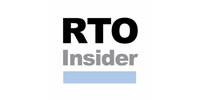 CARMEL, Ind. — Storage is glaringly absent from MISO’s potential plans to manage a possible 40% renewable penetration on the grid, stakeholders told the RTO this week.
CARMEL, Ind. — Storage is glaringly absent from MISO’s potential plans to manage a possible 40% renewable penetration on the grid, stakeholders told the RTO this week.
During a Nov. 28 workshop to discuss its ongoing findings on the impact of increased renewable integration, MISO suggested using computer-optimized transmission buildout and more pronounced ramping from remaining conventional generation to respond to a 40% renewable resource mix.
MISO last month said it would need to take significant steps to reinforce its grid to handle a 40% penetration comprising 75% wind and 25% solar. The RTO said it found a possible “inflection point” at 40% and that it would be difficult to operate within system limits at that point. (See Study: MISO Grid Needs Work at 40% Renewables.) Its multiyear study seeks to determine what the grid needs to maintain the planning reserve margin, operate within the physical limits of the system and support voltage and frequency.
MISO’s renewable penetration currently stands at about 10%. Findings issued last month indicate the RTO could reliably absorb a 20% renewable penetration without damaging frequency response. (See MISO: 20% Renewable Limit for Adequate Frequency Response.)
But at 40% renewables, MISO has found that renewable curtailment becomes more pronounced during shoulder months, though wind curtailment would occur in every hour during an average day, except in summer. It would also confront significant stability issues.
During the Nov. 28 workshop, MISO policy studies engineer Maire Boese said the RTO will likely need to rely on transmission solutions to keep the majority of the renewable energy deliverable to load at the 40% level.
“We want to make sure energy reaches load instead of seeing it be curtailed or not dispatched,” Boese said.
Transmission planning can also become more influenced by computing power and mathematic modeling, MISO concluded.
Yifan Li, of MISO’s policy studies group, said that even with the modeling process, “engineering judgment and human experience” are still the driving factors behind selecting transmission project candidates, although that is changing.
“We’re getting to a point where we can seek some help from computers … to find transmission solutions,” Li said.
Such an automated process led MISO to identify about 80 potential new transmission candidates, down from a pool of about 11,300, he said. The additional transmission would cut down on curtailments and make renewables more deliverable to load, MISO said last month.

Recent Comments